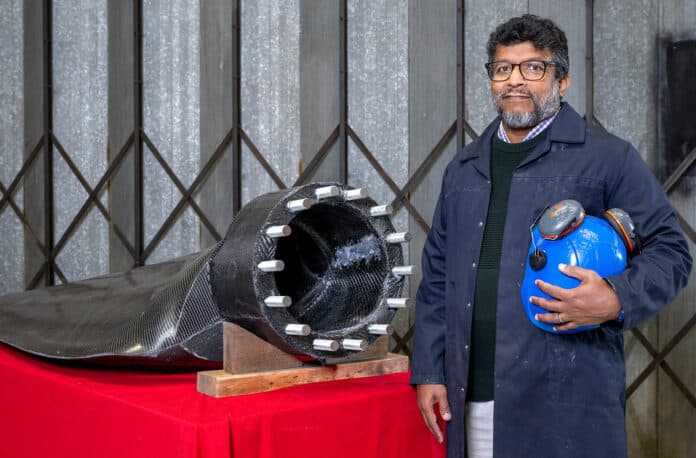Tidal energy is considered to be a more predictable energy source compared to other renewable sources such as solar and wind. However, despite these benefits, tidal energy has not been used as extensively as other forms of renewable energy. One of the reasons for this is the high cost involved in building and maintaining tidal power plants – this results in tidal energy being a missing piece of a year-round, renewable energy grid.
Now, a state-of-the-art tidal turbine blade has been manufactured in Scotland for the first time and more cheaply than before, which is expected to provide a major boost to renewable energy generation initiatives and reduce the levelized cost of tidal energy.
The turbine blade was manufactured by the design engineers from the University of Edinburgh with Tocardo Turbines for tidal energy technology company QED Naval as part of the European Tidal Stream Industry Energiser Project known as TIGER. The team is based at FastBlade – the world’s first rapid testing facility for tidal turbine blades – at Rosyth in Fife, Scotland.
They claimed the new structure reduces the amount of materials necessary – bringing down the weight, volume, and, crucially, the cost of manufacturing the blade.
According to researchers, this is the first time this type of structure has been used in blade manufacturing. Its monolithic structure eliminates the weaker adhesive joints found in conventional rotor blades, making it more resilient to tidal stream conditions.
“We have found a faster, cheaper route to manufacture than the usual tidal blade fabrication process, based on an altered design – we hope the combination of improved design and optimized manufacturing process will contribute to reducing the levelized cost of energy (LCOE) of tidal stream energy, with the long term goal of matching LCOE of offshore wind,” said FastBlade leader Dr. Eddie McCarthy, of the University of Edinburgh’s School of Engineering.
“We are delighted to be working with the University of Edinburgh on this next generation of tidal turbine blades, which will help bring down the cost of tidal installations,” Jeremy Smith, Managing Director of QED Naval, said. “We have deliberately demonstrated the design tools, processes, and build method on our smaller T1 blade design, using a 6.3m rotor diameter, but we will be pulling these through into our T3 blades up to 14m rotor diameter. This work, and its part in the EU Interreg TIGER Project, helps showcase cost savings and the benefits of tidal energy.”
At present, the four blades that were completed have been deployed in QED’s Subhub tidal platform. This platform is currently undergoing sea trials in Langstone Harbour, located on the south coast of England. Additionally, the University of Edinburgh team is looking for funding to perform detailed testing of a fifth blade at FastBlade.
“A recent report found that tidal stream energy could provide more than 6GW of energy to the UK grid by 2050, providing a significant baseline power source for our future electricity grid,” Ian Hatch, Head of Business Development for the College of Science and Engineering at Edinburgh Innovations said in the release. “This project showcases one of the many benefits of using the state-of-the-art equipment that is available for commercial companies to access at the University.”
